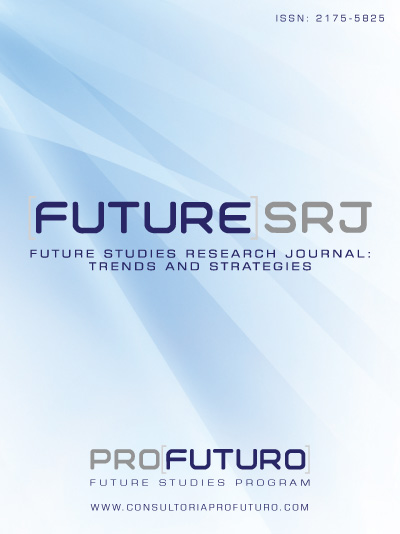Resumo
Neste trabalho calcula-se a projeção da penetração da ferramenta home broker no atendimento de clientes pessoas físicas no mercado acionário brasileiro até 2012. Foram realizadas estimações com três diferentes modelos: Linear, Fisher-Pry e Gompertz. As três projeções foram comparadas entre si tanto pelos coeficientes de determinação das estimações, quanto pelos desvios absolutos e quadráticos produzidos. Como o modelo Fisher-Pry carrega a característica de modelar a dinâmica tecnológica como função do percentual de mercado a ser conquistado e também do mercado já conquistado, diferentemente do modelo de Gompertz, cuja penetração tecnológica é influenciada exclusivamente pelo mercado a ser conquistado, e o modelo linear pode ser visto como um caso simplista entre as três alternativas, os resultados indicaram, como esperado dadas as especificidades do caso estudado, que a projeção pelo modelo Fisher-Pry é a mais aderente aos dados, indicando que no final de 2012 cerca de 84% das pessoas físicas que negociam em bolsa devem executar suas ordens através do Home Broker. Apesar da robustez dos resultados estatísticos, ressalta-se que as projeções realizadas podem estar subestimadas, uma vez que os modelos empregados não contemplam a possibilidade de outras inovações no mercado, como o recente desenvolvimento do Direct Market Access (DMA).
Authors who publish with this journal agree to the following terms:
1. Authors who publish in this journal agree to the following terms: the author(s) authorize(s) the publication of the text in the journal;
2. The author(s) ensure(s) that the contribution is original and unpublished and that it is not in the process of evaluation by another journal;
3. The journal is not responsible for the views, ideas and concepts presented in articles, and these are the sole responsibility of the author(s);
4. The publishers reserve the right to make textual adjustments and adapt texts to meet with publication standards.
5. Authors retain copyright and grant the journal the right to first publication, with the work simultaneously licensed under the Atribuição NãoComercial SemDerivações 4.0 Internacional, which allows the work to be shared with recognized authorship and initial publication in this journal.
6. Authors are allowed to assume additional contracts separately, for non-exclusive distribution of the version of the work published in this journal (e.g. publish in institutional repository or as a book chapter), with recognition of authorship and initial publication in this journal.
7. Authors are allowed and are encouraged to publish and distribute their work online (e.g. in institutional repositories or on a personal web page) at any point before or during the editorial process, as this can generate positive effects, as well as increase the impact and citations of the published work (see the effect of Free Access) at http://opcit.eprints.org/oacitation-biblio.html
• 8. Authors are able to use ORCID is a system of identification for authors. An ORCID identifier is unique to an individual and acts as a persistent digital identifier to ensure that authors (particularly those with relatively common names) can be distinguished and their work properly attributed.
• 9 The authors commit to serving as reviewers for the journal: As a form of reciprocity with the academic community, Future Studies reinforces the commitment that authors of accepted articles have to act as reviewers for manuscripts submitted to the journal.
Os artigos publicados estão licenciados sob uma licença Creative Commons Atribuição - Não comercial - Sem derivações 4.0 Internacional.


